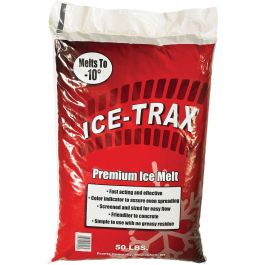Fast-acting ice melt formula
- Effective in melting ice and snow quickly
- Safe for use on various surfaces, including concrete and asphalt
- Convenient packaging for easy application and storage
Ice Melt
| Case quantity |
| Qty | |||||||||
 | | 50/Case |
| ||||||||
Ice Melt: The Essential Solution for Winter Safety
Introduction
As the winter season approaches, businesses and individuals alike need to prepare for the challenges that come with icy and snowy conditions. Slippery surfaces pose a significant risk to safety, making it crucial to have effective solutions in place. That's where ice melt comes in. In this article, we will explore the importance of ice melt and how it can help businesses maintain a safe environment during the winter months.
The Science Behind Ice Melt
Ice melt is a specially formulated product designed to lower the freezing point of water, effectively melting ice and snow on various surfaces. It typically contains chemicals such as calcium chloride, magnesium chloride, or sodium chloride, which work by attracting moisture and generating heat to break down the ice.
When applied correctly, ice melt can prevent accidents caused by slippery surfaces, reducing the risk of injuries and potential liability for businesses. It is essential to choose a high-quality ice melt product that is safe for both people and the environment.
The Benefits of Using Ice Melt
1. Enhanced Safety: Ice melt provides an immediate solution to icy conditions, ensuring that walkways, parking lots, and other areas are safe for employees, customers, and visitors. By proactively addressing potential hazards, businesses demonstrate their commitment to safety.
2. Time and Cost Savings: Removing ice manually can be time-consuming and labor-intensive. Ice melt simplifies the process by quickly melting ice and snow, saving valuable time and reducing the need for excessive manual labor. Additionally, using ice melt can help prevent damage to surfaces caused by scraping or shoveling.
3. Versatility: Ice melt can be used on various surfaces, including concrete, asphalt, and even delicate materials like pavers or stone. This versatility makes it an ideal solution for businesses with different types of outdoor spaces.
4. Environmental Considerations: Many ice melt products are now formulated to be environmentally friendly, minimizing their impact on plants, animals, and water sources. Choosing eco-friendly options not only protects the environment but also aligns with the sustainability goals of many businesses.
Choosing the Right Ice Melt Product
When selecting an ice melt product for your business, consider the following factors:
1. Temperature Range: Different ice melt products have varying effectiveness at different temperatures. Ensure that the product you choose is suitable for the average winter temperatures in your area.
2. Safety: Look for ice melt products that are safe for use around people and pets. Avoid products that contain harmful chemicals or have a high salt content, as these can damage surfaces and harm the environment.
3. Application Method: Consider how the ice melt will be applied. Some products come in granular form, while others are available as liquid solutions or pellets. Choose a product that aligns with your preferred application method and equipment.
Conclusion
Ice melt is an essential tool for businesses looking to maintain a safe environment during the winter season. By choosing a high-quality ice melt product and following proper application guidelines, businesses can prevent accidents, save time and costs, and demonstrate their commitment to safety. Remember to consider factors such as temperature range, safety, and application method when selecting the right ice melt product for your business. Stay prepared and keep your premises safe with ice melt!










